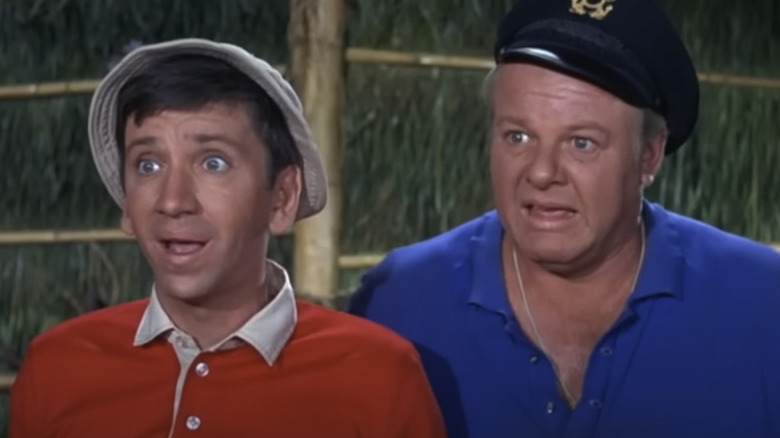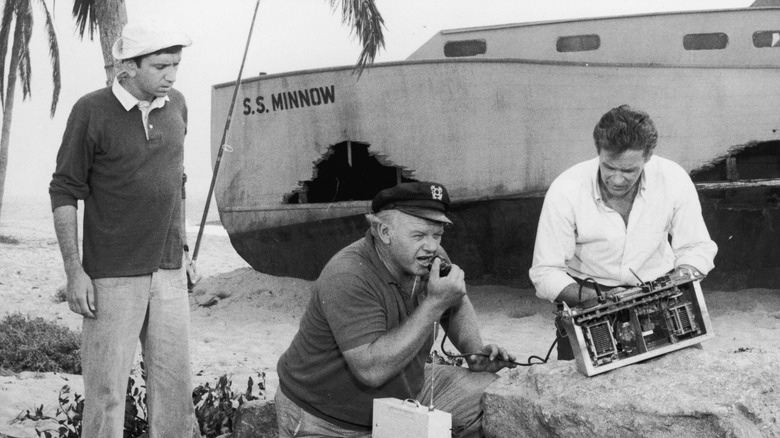Getting To Gilligan's Island's Set Put The Crew At Risk Of A Real Crash Landing
Making just about any episode of television can be a fraught experience. There's never enough time or money to perfectly achieve the ideal version of what a showrunner envisions, but the inevitable limitations one encounters — whether it's a shocking number of frogs piled up outside of a writer's door, or being forced to write through unimaginable pain — can still result in something special. In the case of "Gilligan's Island," the team behind the show eventually produced a series that stood the test of time and became one of the most beloved sitcoms ever ... but not before one of those limitations had the director of the show's pilot worried for his life.
After creator Sherwood Schwartz pitched the show to a random gas station attendant, then to executives at CBS and got the resources to make a pilot, he and his collaborators prepared to depart for Hawaii to film the episode. It couldn't have been cheap to shoot on location on the island of Kauai in 1963, and presumably not wanting to unnecessarily waste the network's money, the pilot's credited production manager, Bill Porter, made a decision that left director Rod Amateau enraged.
Gilligan's Island's production manager may have taken the idea of saving money just a little too far
In Schwartz's 1988 memoir "Inside Gilligan's Island," he recalls being among a group of about a dozen people (including star Bob Denver, who played Gilligan) on a flight to their Hawaiian destination near Moloaa Bay on Kauai, where filming would take place. The only problem? The plane they were on was a Constellation aircraft, a type of vehicle that was definitely on the downswing in terms of popularity at the time.
"What the hell are we doing in this relic?" Schwartz recalls Amateau saying during the trip, remembering how "angry" the director was at their aerial accommodations. "To this day Rod Amateau is still furious with our production manager because he arranged our transportation in that old propellor-driven Constellation. By 1963, jets were already in use, but a production manager's job is to save money, and jets were more expensive."
With the benefit of hindsight, it's difficult to blame Porter for doing his job by trying to preserve some budget and allocate that money to different areas of the production that might have better benefited from it. But then again, I wasn't on that particular flight, so I don't know how rickety and janky and dangerous it might have felt. I can also understand Amateau's perspective that there wouldn't have been a show at all if many of the key figures responsible for it died in a plane crash before the pilot was ever filmed. Thankfully, everything worked out, and a few days later, those castaways set sail on their fateful trip, and their planned three-hour tour turned into a show that ran for nearly three years and almost 100 episodes.

